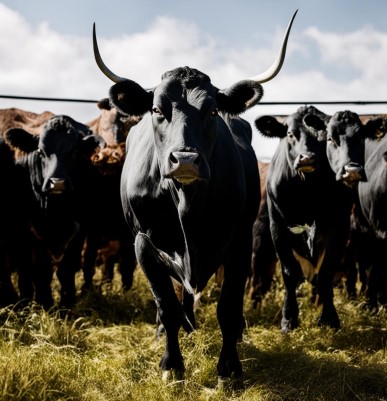New feed additive reduces nitrogen emissions by up to 81%

A study conducted in Germany has shown that willow leaves can significantly reduce ammonia and nitrous oxide emissions in livestock production.
A study published in the journal Agriculture, Ecosystems & Environment shows that a natural feed additive could make livestock farming more environmentally friendly, while a traditional drug finds new uses.
An ancient natural remedy could help reduce the ecological footprint of agriculture in the future: willow leaves. In a collaborative project, scientists demonstrated that certain ingredients in willow leaves can significantly reduce nitrogen emissions from livestock urine, which are harmful to the environment and climate, by up to 81%.
Nitrogen emissions: a serious problem for livestock production
Ammonia (NH₃) and nitrous oxide (N₂O) are among the main gaseous nitrogen compounds emitted in large quantities by agriculture worldwide. Approximately 80% of global ammonia emissions and 81% of nitrous oxide emissions come from this sector. Particularly alarming is that while ammonia acidifies soils and overfertilizes ecosystems, nitrous oxide has a climate impact approximately 300 times greater than CO₂ and persists in the atmosphere for approximately 150 years.
A significant portion of these emissions is produced directly in pastures, through the urine of ruminants such as cows, sheep, and goats. Until now, emissions from pasture excrement were considered difficult to control, as conventional technical or chemical measures, such as inhibitors, are practically inapplicable in these cases.
"If we want to maintain pastoralism as a sustainable and animal-friendly form of livestock production, we must also manage its environmental impact," experts say.
The amazing effect of willow leaves
Inspired by previous discoveries about the effects of plant ingredients on metabolism, they investigated whether salicin, a plant molecule precursor to salicylic acid, found in willow leaves could influence nitrogen metabolism in animals.
In fact, the experiment showed that feeding cattle willow leaves containing salicylate dramatically reduced the formation of ammonia and nitrous oxide produced in urine. Compared to the control group, 14% less ammonia and 81% less nitrous oxide were measured over 48 hours on standard soil. This effect is due not only to salicylic acid but also, presumably, to other bioactive compounds present in willow leaves.
Willows: A traditional medicinal plant with potential for animal consumption.
Willows (genus Salix) are fast-growing woody plants traditionally used as medicinal and forage crops, for example, in New Zealand and North America. In Germany, they have until now been used primarily as energy crops or in agroforestry systems. The effectiveness of their foliage in reducing nitrogen loss opens up new prospects for sustainable animal nutrition.
"Willow leaves are a renewable and locally available raw material, particularly suitable as a natural feed supplement for livestock where other solutions are ineffective," they note.
Next steps: field trials and other tree species
Further research should confirm whether these positive effects are confirmed under real agricultural conditions. Factors such as feed intake, soil type, climate , and microbial activity are crucial. Potential effects on nitrate formation in soil are also being studied.
In parallel, they are studying other deciduous trees, such as poplar, which has properties similar to willow and also contains high levels of salicylates.
In the long term, researchers see great potential in so-called silvopasture systems, which combine meadows and forests. In these systems, woody plants such as willows can provide food directly to the pasture, improve the microclimate, and help reduce natural emissions. The use of willow leaf extracts as an additive to manure or farmyard slurry is also currently being tested, but much more in-depth research is needed.
Read together with it:
- An HSE expert reported on the "evolution of inequality" in access to healthcare.An HSE researcher analyzed Russians' access to healthcare over a ten-year period. In 2021, the influence of financial factors became noticeable for the first time: low income reduces the likelihood of visiting a DOCTOR.Over the ten years from 2011 to 2021, the number of Russians requiring medical care but not receiving it remained virtually unchanged, according to a study by Lyudmila Zasimova, hea...
- Низкое предложение и устойчивый спрос: в Аргентине растут цены на мясоЦены на говядину снова выросли, что отразилось на полках супермаркетов и в мясных магазинах. За последние две недели розничные цены выросли на 8–12%, а на некоторые популярные отрубы рост превысил 15% по сравнению с октябрем. Тем не менее, продажи остаются высокими: потребители продолжают покупать, принимая новые цены и закрепляя тенденцию, которая повторяется каждый год в конце года, когда спрос ...
- Лучшие не только по молоку. Какие рекорды поставили в экспериментальной базе имени КотовскогоНовости темы Экспериментальная база имени Котовского известна далеко за пределами Узденщины благодаря высоким показателям, которых из года в год добиваются в хозяйстве. Лучшие результаты в районе агропредприятие показывает как по молоку и зерновым, так и по сахарной свекле. Страда этого года, проходившая не в самых простых погодных условиях, также стала рекордной. Хлеб – всему голова Весна 2.........
- Pharmaceutical companies see a threat to EU security due to bacteria in UkraineAntibiotic-resistant superbugs have been detected in Ukrainian soldiers since the beginning of the conflict, and now they pose a threat to Europe, according to a foundation developing antibiotics.The Ukrainian conflict threatens Europe with antibiotic-resistant "superbugs," said Henry Skinner, CEO of the AMR Action Fund, which specializes in investing in antimicrobials. His article was published o...
- В Амурскую область поступило свыше 6 тысяч тонн мяса птицы из КитаяС 3 июня по 6 ноября инспекторы проверили 290 партий мяса, все из которых были сопровождены ветеринарными сертификатами, подтверждающими их качество и безопасность. Лабораторные исследования, проведенные под контролем Россельхознадзора, не выявили нарушений, и груз был допущен на территорию России.


